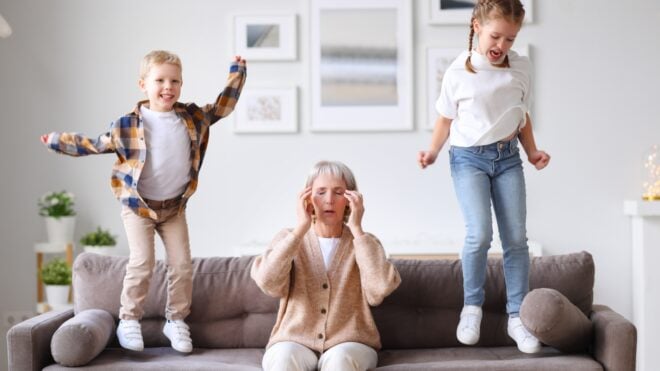
In this article
The fight against the novel coronavirus that causes COVID-19 has entered a new phase in some hard-hit parts of the country. Instead of attempting to contain the outbreak, people who have been exposed are being ordered into a 14-day quarantine. Mitigation measures ask that anyone who is experiencing symptoms of a cold or flu to immediately self-quarantine until the symptoms end or get bad enough to require medical intervention.
COVID-19 symptoms are similar to those of colds and flu, and since we are in the middle of cold and flu season, there’s a good chance that you or someone you know will find yourselves in a self-quarantine situation. This is a good time to understand what that means and create a plan for it.
What is a quarantine?

The word “quarantine” is derived from the Italian “quarant,” which means “40.” It dates back to the Black Plague in Italy, where those suspected of being ill were confined in isolation for 40 days.
Merriam-Webster defines it as “a restraint upon the activities or communication of persons or the transport of goods designed to prevent the spread of disease or pests” or “a state of enforced isolation.”
Public health officials are advising everyone (even those of us who feel fine) to practice social distancing, which includes avoiding large public gatherings, keeping six feet away from others, and refraining from greeting people with handshakes or hugs.
But, in many parts of the country, you may need to self-quarantine at the first sign of a cold symptom.
When should you quarantine yourself and your family?

Sacramento County was one of the first in the nation to institute a new mitigation strategy to combat the coronavirus. Their public health department now says that, “Quarantine strategy now hinges on whether a person is showing symptoms or not.”
- If a person does not have symptoms, they do not need to quarantine.
- If a person is showing symptoms of fever, cough, shortness of breath, they are advised to self-quarantine at home until they are no longer showing symptoms.
- Those who are high risk with symptoms should contact their doctor.
- The severely ill should go to the hospital.
The US Department of Homeland Security advises that you have a two-week supply of food on hand. The CDC also has an extensive guide to preparing for COVID-19 at Coronavirus.gov, complete with this checklist for how to get your household ready that includes these suggestions:
- Consider members of the household that may be at greater risk, such as older adults and people with severe chronic illnesses.
- Ask your neighbors what their plan includes.
- Create a list of local organizations you and your household can contact in case you need access to information, healthcare services, support, and resources.
- Create an emergency contact list including family, friends, neighbors, carpool drivers, health care providers, teachers, employers, the local public health department, and other community resources.
- Choose a room in your house that can be used to separate sick household members from others.
The CDC advises that if you take medication, you “contact your healthcare provider to ask about obtaining extra necessary medications to have on hand in case … you need to stay home for a prolonged period of time.”
Brown University infectious disease professor Marguerite Neill, an infectious disease expert at Brown University, suggests you have a 30-day supply on hand.
Los Angeles mom Barbara Barnes Gravesteijn is relieved that classes for her grad student husband are being held virtually for the duration of the health emergency. “I work from home and haven’t done any group activities,” she told Mom.com. “And I am actively thinking about what to do about our 9-year-old.”
This is a good reminder to talk to your kids about what is happening and explain the circumstances in a way that will not scare them or cause undue stress, as well as to prepare to keep them occupied and entertained for an indeterminate amount of time.
Jen Greenfield of Colorado has given that some thought, too, “I’ve started stockpiling art and craft supplies for my crafty 6-year-old twins,” she told Mom.com. “Can’t have enough tape, yarn, and construction paper in this house, even under normal circumstances. Also, a couple of new board games I won’t open until (or if) schools are cancelled for a bit.”
What to do if you need to self-quarantine

The Center for Disease Control advises those who display symptoms of COVID-19 to do the following:
Stay home: People who are mildly ill with COVID-19 are able to isolate at home during their illness. You should restrict activities outside your home, except for getting medical care.
Avoid public areas: Do not go to work, school, or public areas.
Avoid public transportation: Avoid using public transportation, ride-sharing, or taxis.
Stay away from others: As much as possible, you should stay in a specific room and away from other people in your home. Also, you should use a separate bathroom, if available.
Limit contact with pets and animals: You should restrict contact with pets and other animals while you are sick with COVID-19, just like you would around other people. Although there have not been reports of pets or other animals becoming sick with COVID-19, it is still recommended that people sick with COVID-19 limit contact with animals until more information is known about the virus.
Seek medical attention: Seek prompt medical attention if your illness is worsening (e.g., if you have difficulty breathing).
Call your doctor: Before seeking care, call your health care provider and tell them that you have, or are being evaluated for, COVID-19.
Wear a face mask when sick: Put on a face mask before you enter the facility. These steps will help the health care provider’s office to keep other people in the office or waiting room from getting infected or exposed.
Alert health department: Ask your health care provider to call the local or state health department. Persons who are placed under active monitoring or facilitated self-monitoring should follow instructions provided by their local health department or occupational health professionals, as appropriate.
Stay at home until instructed to leave: Patients with confirmed COVID-19 should remain under home isolation precautions until the risk of secondary transmission to others is thought to be low.
Talk to your health care provider: The decision to discontinue home isolation precautions should be made on a case-by-case basis, in consultation with health care providers and state and local health departments.







